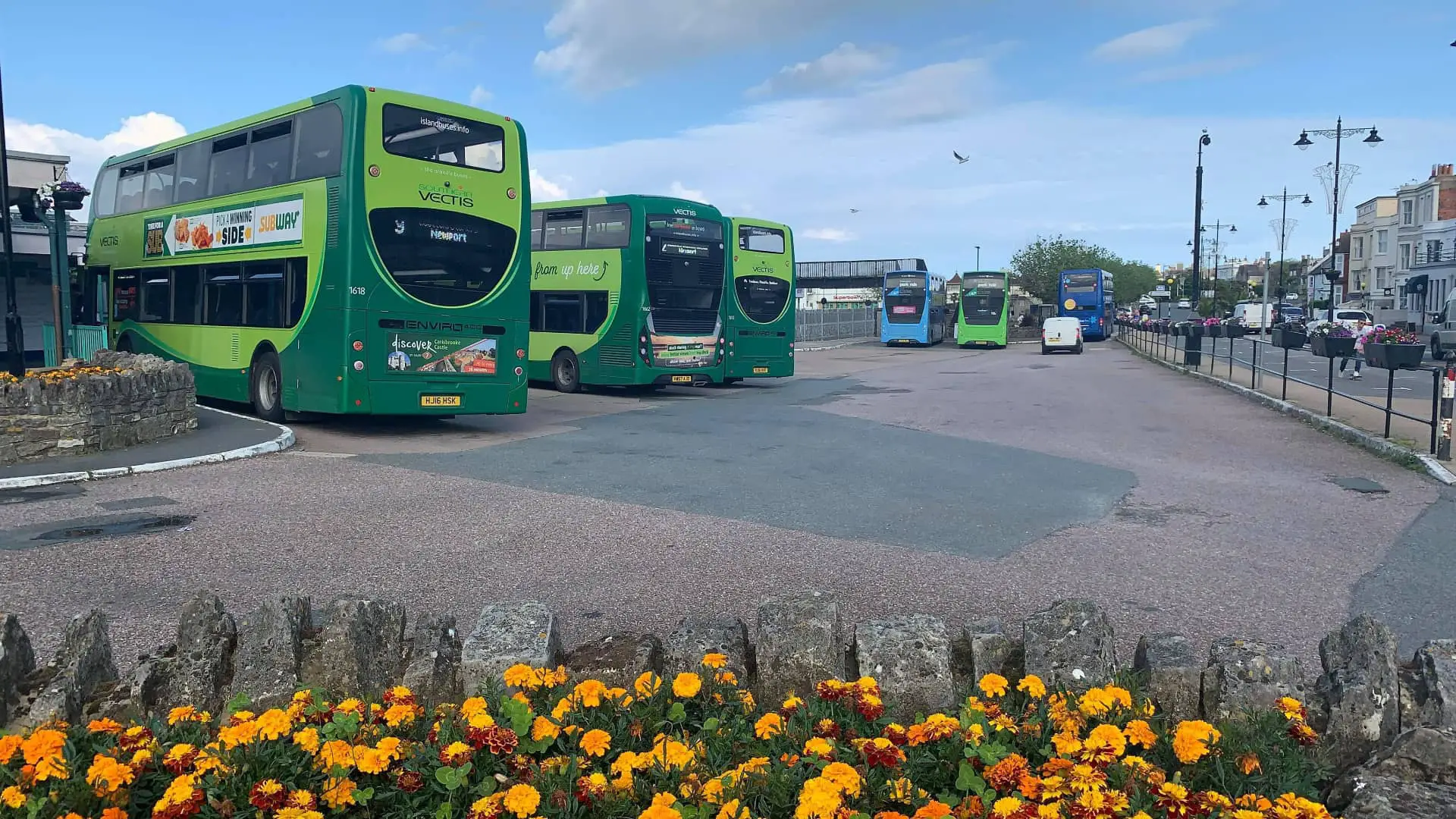OnTheWight always welcomes a Letter to the Editor to share with our readers – unsurprisingly they don’t always reflect the views of this publication. If you have something you’d like to share, get in touch and of course, your considered comments are welcome below.
Bob White, FIHE, MCIHT, MICE, shares this letter also sent to Isle of Wight council officers in relation to the proposed changes to road layout for the Ryde Interchange Project. Ed
I thought it would be helpful if I detail what I see as failings, some major, of the current proposal for Ryde Transport Interchange. This is not necessarily a comprehensive list.
1. It does not appear to address the vital issue of how pedestrians move from the pier to the station forecourt, instead (as is shown) of being squeezed alongside the station building. Removal, or re-siting, of the control barriers would allow for this.
2. The introduction of a carriageway loop on the Western Gardens is crass, and unsightly, especially given the slope involved. Cars will dominate the view from the pier that currently has people enjoying public space. This feature is a very obvious favouring of cars over more vulnerable street users.
3. The awkward turns in the loop will add to congestion at pier set down/pick up times, and the moving of the exit to behind the controlled crossing will add to queuing on the pier. The proximity of the tight turn out of the loop close to the signal head is potentially dangerous, as is the 180 degree manoeuvring so close to where pedestrians going on and off the pier are squeezed.
4. The introduction of buses into the view from the pier to the fine buildings (such as the King Lud, Chocolate Apothecary) defeats one of the declared objectives of the scheme, with a wall of buses evident when emerging from the station.
5. Buses are straight. Curved bus bays simply don’t work.
6. The front two of the bus bays on closest to George Street are potentially dangerous because drivers will not be able to see vehicles in their rear view mirrors.
7. Instead of the relatively modest existing traffic route and manoeuvring area between the road and the pier, which could easily be calmed and improved for pedestrians crossing it using better materials, the carriageway loop and bus lane, along with the wall of buses and gathering of people waiting for them, will greet arrivals from the pier and station.
8. Putting a road (bus lane) so close to the front of the station degrades the existing “plaza” effect of the admittedly cluttered public space. It also adds to the detachment of the station and pier from the parade of buildings opposite. A more radical solution might be to improve the plaza, as part of the overall Western Gardens area, with a crossing point to the wide footway outside the popular buildings. No thought seems to have been given to non-signalised solutions for crossing, which may be very appropriate where there is high pedestrian demand.
9. The George Street signals add a highway intervention into the public space. While it is less than ideal for buses to U-turn at Dover Street, introducing signals at the bottom of George Street involves yet another interruption of the east/west pedestrian movement and represents over-engineering. Traffic signals can increase vehicle speeds, while better materials can make the whole transport interchange slower/calmer with less engineering. There may even be better options for the critical crossing between the Western Gardens and Union Street.
10. Severance of the station plaza from the Western Gardens is completely opposite to creating the kind of public realm that many years of usage have successfully established.
11. Is the existing bus station actually unacceptable, or could it be repaved and slightly modified to make it sit comfortably beside the enhanced Western Gardens/Station Plaza?
In my professional opinion, the current proposal is worse than the existing layout, and has the potential to increase personal injury collisions, traffic congestion and air pollution.
It could prove to be a very costly degradation of Ryde seafront, after a long period of very significant disruption.




